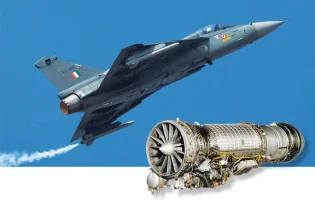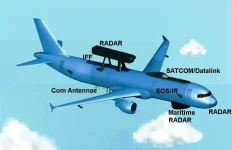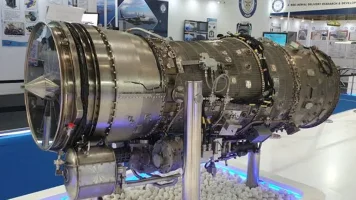- Views: 2K
- Replies: 9
India is developing a new-generation hypersonic missile, the Rudram-IV, designed to provide the Indian Air Force (IAF) with an unprecedented capability to strike high-value targets deep inside enemy territory from a safe distance.
This Long-Range Stand-Off Weapon (LRSOW) is being engineered by the Defence Research and Development Organisation (DRDO) and represents a significant advancement in the country's indigenous missile programme.
The Rudram-IV is the latest and most advanced missile in the Rudram series, which has been developed to enhance the IAF's air-to-ground combat effectiveness.
The programme began with the Rudram-I, an anti-radiation missile successfully tested in 2020 with a range of 150 km, designed specifically to neutralise enemy radar and communication posts.
The series progressed with the Rudram-II (350 km range) and Rudram-III (550 km range), which introduced more advanced features like dual-seekers to engage hardened targets such as bunkers and command centres.
The development of this family of weapons underscores India's push for self-reliance ("Aatmanirbhar Bharat") in critical defence technologies.
Spearheaded by the DRDO's Advanced Systems Laboratory (ASL) in Hyderabad, the Rudram-IV is set to be a "quantum leap" over its predecessors.
While the earlier versions established a solid foundation, the new missile is projected to have an operational range between 1,000 and 1,500 kilometres. This extended reach will allow IAF fighter jets to launch attacks from well outside the engagement envelope of most modern air defence systems, ensuring the safety of pilots and aircraft.
The Defence Acquisition Council (DAC) granted its initial approval, the Acceptance of Necessity (AoN), for the weapon system in 2023, paving the way for its development and eventual induction.
The most formidable feature of the Rudram-IV is its combination of hypersonic speed and a unique flight path.
The missile is designed to travel at speeds greater than Mach 5 (five times the speed of sound), especially during its final attack phase. This immense velocity is coupled with a quasi-ballistic trajectory, where the missile flies at a lower altitude and can perform manoeuvres.
This combination makes it exceptionally difficult for even the most sophisticated air defence systems, such as Russia's S-400 or China's HQ-9, to detect, track, and intercept, thereby ensuring a high probability of mission success.
To maximise operational flexibility, the Rudram-IV is being built with a lightweight design, expected to be less than the 600-700 kg weight of the Rudram-III. This will enable its integration with a wide range of IAF aircraft.
The Sukhoi Su-30 MKI, the backbone of the IAF's fighter fleet, could potentially carry multiple missiles. Other platforms, including the Mirage 2000 and the multi-role Rafale jet, are also expected to be compatible.
This versatility allows the IAF to deploy this powerful weapon across different squadrons and for various mission profiles, significantly strengthening India's strategic deterrence and national security posture.





